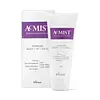What's inside
What's inside
 Key Ingredients
Key Ingredients

No key ingredients
 Benefits
Benefits

 Concerns
Concerns

No concerns
 Ingredients Side-by-side
Ingredients Side-by-side

Water
Skin ConditioningXylitylglucoside
HumectantAnhydroxylitol
HumectantXylitol
HumectantCoco-Caprylate/Caprate
EmollientCaprylic/Capric Triglyceride
MaskingCetearyl Alcohol
EmollientCetearyl Nonanoate
EmollientOctyldodecanol
EmollientC14-22 Alcohols
Emulsion StabilisingC12-20 Alkyl Glucoside
EmulsifyingDimethicone
EmollientPolyacrylate-13
Polyisobutene
Polysorbate 20
EmulsifyingCarbomer
Emulsion StabilisingSodium Gluconate
Skin ConditioningDiethylhexyl Syringylidenemalonate
Skin ProtectingTriethanolamine
BufferingPhenoxyethanol
PreservativeEthylhexylglycerin
Skin ConditioningWater, Xylitylglucoside, Anhydroxylitol, Xylitol, Coco-Caprylate/Caprate, Caprylic/Capric Triglyceride, Cetearyl Alcohol, Cetearyl Nonanoate, Octyldodecanol, C14-22 Alcohols, C12-20 Alkyl Glucoside, Dimethicone, Polyacrylate-13, Polyisobutene, Polysorbate 20, Carbomer, Sodium Gluconate, Diethylhexyl Syringylidenemalonate, Triethanolamine, Phenoxyethanol, Ethylhexylglycerin
Ingredients Explained
These ingredients are found in both products.
Ingredients higher up in an ingredient list are typically present in a larger amount.
Ethylhexylglycerin (we can't pronounce this either) is commonly used as a preservative and skin softener. It is derived from glyceryl.
You might see Ethylhexylglycerin often paired with other preservatives such as phenoxyethanol. Ethylhexylglycerin has been found to increase the effectiveness of these other preservatives.
Phenoxyethanol is a preservative that has germicide, antimicrobial, and aromatic properties. Studies show that phenoxyethanol can prevent microbial growth. By itself, it has a scent that is similar to that of a rose.
It's often used in formulations along with Caprylyl Glycol to preserve the shelf life of products.